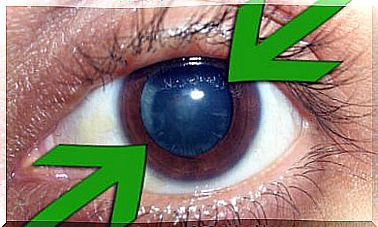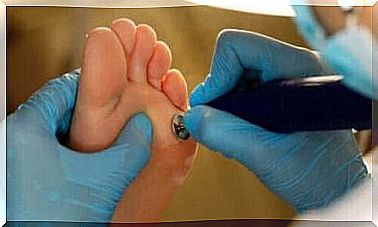Runnorexia Or A Running Addiction

Running is positive because it improves circulation, cerebral oxygenation and helps maintain an adequate body mass index. However, doing it obsessively is harmful to your health. In this article, we’re going to see what runnorexia, or running addiction, is all about.
Any activity can become a problem for people, even those originally intended to improve quality of life. Nothing done too much is healthy. In life we must maintain a balance.
What is runnorexia?
Although it is a physical activity aimed at improving aesthetics and overall health, excessive running can become a serious problem for some people. Runnorexia or a running addiction has been defined as a behavioral dependence.
People who start exercising regularly do so to improve their quality of life. They may eventually induce a pathological dependence on the activity.
In the case of runnorexia, the problem is that one completely loses the goal of going for a run. They no longer do it for the health benefits of exercise, but they are just trying to satisfy an irrational desire that brings temporary pleasure.
Social influence is one of the major risk factors for the acquisition of behavioral addictions. For example, someone who is not satisfied with his physical appearance is influenced by beauty stereotypes, which he will aggressively try to achieve.
How can you recognize it?

As with other types of addictions, the most important indicator for recognizing run norexia or a running addiction is the frequency with which a person performs the activity. In cases where running takes place on a daily basis, as a kind of ritual, the prevalence indicator is met.
Of course, it will also be necessary to recognize the importance that people attach to it. For example, someone who cannot miss a training day without feeling sad would meet the irrational behavior indicator.
Along the same lines , another sign that running is becoming a problem is the intensity of the behavior. Intense cases occur when a person is unable to stop, even if he is experiencing some discomfort. An example of this is running without recovering from an injury.
Overtraining is not the same as a running addiction. In the case of someone who is overtrained, it may be due to fear of some competition. What happens with runnorexia is that it does not correspond to the pursuit of a goal, but to the need to maintain the behavior constantly and irrationally.
What are the signs of runnorexia to watch out for?
The indicators of an addiction are usually present in terms of fairly clear symptomatology. Bearing in mind that in this case it is a behavior, let’s see what the most obvious signs are:
- Obsession: A person loses himself in his running routine to the point that he cannot avoid doing it daily.
- Running has negative consequences in the important areas of life: work, study, family.
- Inability to maintain control.
- Denial: It is difficult for an addict to accept that they are a problem because of the addictive behavior.
What are the physical and social consequences?
We can divide the negative consequences of a running addiction into two aspects. These aspects of ruunorexia or a running addiction are the following:
- Physical: from muscle injuries to extreme mass loss.
- Social: neglect of important relationships with family and friends.
In some cases, people distance themselves from their closest social circles who try to talk them into some sense of their addiction. The physical and social consequences that people with addiction have always affect their family and friends.
How to overcome run norexia or a running addiction

To overcome a behavioral addiction, you have to accept that you have a problem. From then on, people can begin the process of detoxifying their behavior. In this sense, they must acquire new habits that will gradually gain ground.
A running addiction may require psychological care (Spanish link). Cognitive behavioral therapy is the most common type of treatment in such cases, as it works quite well to restructure the mental schemas that maintain the addiction.
The support of family and friends can make the difference between success and failure in overcoming addiction. When those close to the individual can understand that their loved one is dealing with an addiction, they should try not to pass judgment.
The best way to provide support is to do it with understanding, which makes the affected person feel understood and supported. However, the problem should not be downplayed. Phrases like “you just have to stop, you can do it” or “it can’t be that hard to stop running” are counterproductive.
Recommendations to Prevent Running Addiction or Run Norexia
Some ideas for preventing runnorexia or a running addiction are based on self-perception, that is, that someone has a healthy self-image. This principle is based on the fact that good self-esteem promotes healthy self-care habits.
Experts recommend increasing self-esteem by making an objective evaluation of the things we are proud of. Finally, it’s important to be careful about how we structure our routines.
For example, it is not a good idea to be strict when developing an exercise plan. It is best to have rest days when we can do other things that are also helpful.









